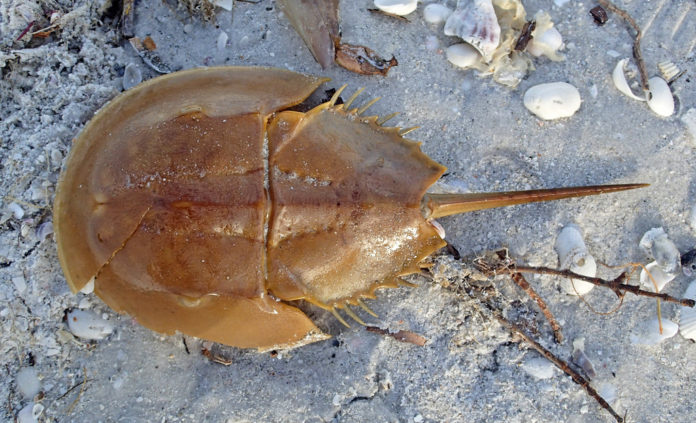Horseshoe crabs might not look like most other crabs, as they lack the long, spindly legs and the pair of pincers that most crabs do, though they’re arguably more valuable than their counterparts.
These organisms are in high demand in the medical industry, as their blood contains an amebocyte, which are moving cells that are found inside of invertebrates’ bodies, that is instrumental in the creation of Limulus amebocyte lysate, an extract that can accurately be used to detect the presence of bacterial endotoxins in the blood. Further, horseshoe crab blood is so special that Limulus amebocyte lysate can even be used to determine the quantity of these bacterial endotoxins in patients’ blood levels.
The next most popular use of horseshoe crabs is as bait when fishing for ocean life like conch and eels.
A recent study from the likes of the University of Wisconsin-Madison’s very own Jesus Ballesteros and Prashant Sharma, both of whom are evolutionary biologists at the well-known research university.
It Turns Out That Horseshoe Crabs Are More Unique Than We Previously Thought
Mr. Sharma and Mr. Ballesteros managed to have a piece of research about the horseshoe crab’s lineage and genetic similarity to arachnids. The piece, titled “A Critical Appraisal of the Placement of Xiphosure (Chelicerata) with Account of Known Sources of Phylogenetic Error,” found that Xiphosura, the scientific name for the genus that horseshoe crabs belong to, was the tried-and-true close relative of Ricinulei, an order of spiders known as hooded tick spiders.
The piece was published recently in the popular scientific journal known as Systematic Biology, the peer reviewers of which found no flaws in the work done by Ballesteros and his partner Prashant Sharma, causing it to be released to the world not too long ago.
Xiphosura, an order of organisms that are collectively known as horseshoe crabs, is now officially underneath the clade of arachnid.
Biologists generally see arthropods, better explained as invertebrates with outer shells like spiders and insects, as the most widely dominant types of organisms on planet Earth. This is because they’re found all throughout the air, ground, water, and on top of land. Further, there are more than one million types of arthropods.
This is of relevance because arthropods were found by the pair of researchers to evolve more quickly than they previously thought. Currently, four types of horseshoe crabs roam the ocean.



